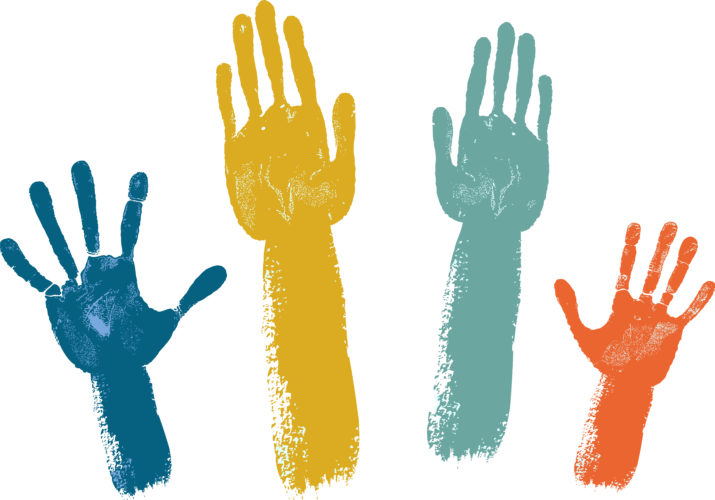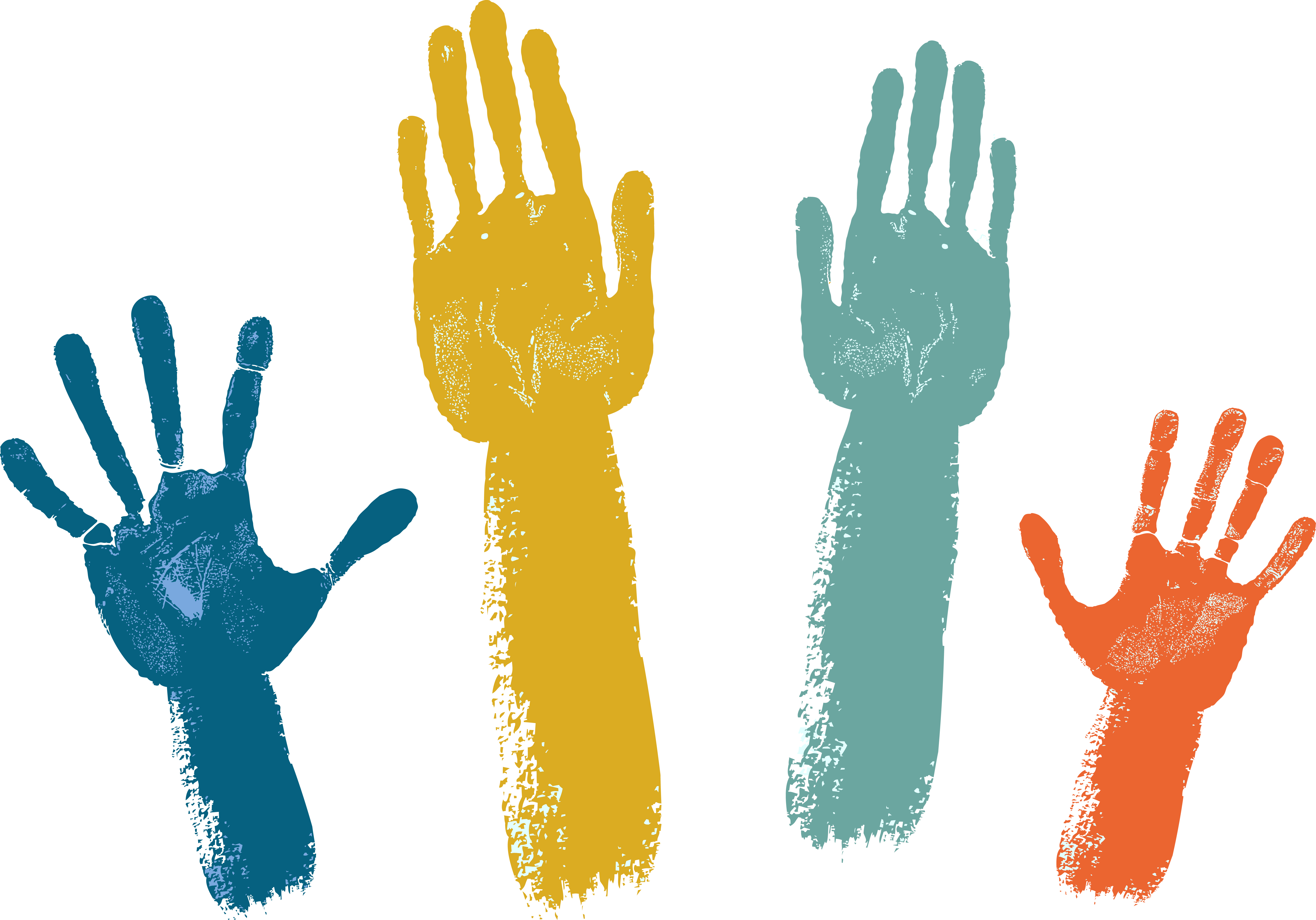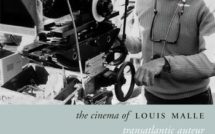

This is part of our Campus Spotlight on the Consortium on Forced Migration, Displacement, and Education (CFMDE).
In March 2017, twenty students sat their human rights oral examination at the Learning Hub of the University of Geneva, located in Kakuma refugee camp, Kenya. The course, entitled “Introduction to Human Rights,” was led for the first time in Kakuma between September 2016 and March 2017 by InZone—an academic center of the University of Geneva, whose mission is to build higher education spaces in refugee camps.[1] InZone has been working in refugee camps for the last eight years, and in fragile contexts for over twelve years. Starting with trainings for interpreters in the field, InZone subsequently developed into a center dedicated to higher education for refugees in refugee camps in Kenya and Jordan. Each year, around four hundred refugee students are enrolled in courses in French and English on: engineering, history, ethics, medicine, public health, applied arts, and human rights. These lead to certificates and academic opportunities both at the University of Geneva and with its local academic partners.[2]
The students of human rights, who sat their exams in Kakuma during those hot and dusty days of March 2017, had passed through a whole semester of study. They first applied for the course; then they were selected to follow, each week, a two-hour online course, through the MOOC “Introduction to Human Rights” of the University of Geneva. In addition, students attended each week an onsite discussion at the InZone café—an informal learning place located in the Ethiopian community of Kakuma 1.[3] To support them in this learning process, they were also assisted onsite by a refugee facilitator as well as an e-tutor from the University of Geneva on a Whatsapp forum. This constitutes InZone’s Learning Ecosystem, a blended model of learning specifically designed for studies taking place in the environment of a refugee camp.
In that context, Kakuma differs dramatically from the environment of the University of Geneva. This refugee camp, located in north-western Kenya, houses more than 180,000 refugees from some twenty nationalities.[4] The camp is jointly administered by the Kenyan State and the United Nations High Commissioner for Refugees (UNHCR), with an allocation of duties and responsibilities far from crystal clear.[5] Kakuma is a harsh place to live. The climate is semi-arid and the living conditions in the camp are ones of survival.[6] With fewer resources being allocated to the camp by the Kenyan government, foreign states, international organizations, and donors, food rations are frequently cut and people struggle to find the strict minimum to live decently.[7] Moreover, because of Kenya’s encampment policy,[8] refugees in Kenya are, with some exceptions, obliged to stay in refugee camps, with very few opportunities to access the durable solutions proposed by the international community: voluntary repatriation, resettlement and local integration.[9] Therefore, for most refugees, the near future means remaining in Kakuma and there is an urgent need for them to invest their energies and capacities in the life of the camp.
Studying human rights in a refugee camp
The MOOC “Introduction to human rights”[10] is followed each year by thousands of students around the world, with the support of an online forum where students can send their questions to a teaching assistant located at the University of Geneva. This model has rapidly proven its limits for students in Kakuma. To permit MOOCs to meet the claim that they offer democratic access to higher education, even in fragile contexts, additional steps need to be taken.
Firstly, students in Kakuma face myriad practical challenges in their studies. The MOOC “Introduction to human rights” is available in French on the Coursera platform. This means that access to a computer and internet is a prerequisite for the course; access to either is a rare and expensive commodity in a refugee camp. InZone has thus installed a Learning Hub in Kakuma 2—a shipping container with computers and access to the internet for its students. The situation is nevertheless far from ideal, the container being far too small (and sometimes too hot) for the high number of students enrolled. Also, access to the internet is not always secured.[11] Additionally, Kakuma is an immense refugee camp with no public transportation. Students have to travel a significant distance to attend classes and discussions, walking several kilometers in dust and often 95-degree heat, or paying for a ride on a motorbike. This can be a major impediment, especially for female students. Movement in the camp is indeed particularly dangerous for them[12] and, as they remain the main caretakers of children, their ability to travel is often limited. For this reason, InZone pays all the transport costs of its students to and from the Learning Hub, for the time of their enrollment in courses. Another practical challenge faced by refugee students is the time to be allocated to their studies. To survive in Kakuma, refugees work for international organizations, NGOs, governmental agencies, or manage their own businesses. This is especially true for InZone students who usually have a secondary education diploma and are therefore in a privileged position to find a job. It can be a hard choice to make to reduce one’s hours of work in order to study – particularly for students with a family to support—and some “employers” do not display any flexibility. Also, many female InZone students are mothers and in charge of most domestic duties with very little time left for studies, some coming as they do from cultural backgrounds that are sometimes not open to the phenomenon of women’s education. Lastly, on practical challenges, InZone has recently been encountering students with difficulties in concentrating in class during the late morning hours, because they have not had enough to eat. If InZone has always ensured lunch for its students during school days, food rations in Kakuma have placed students in a difficult situation. The center has thus extended its food support to juice and snacks in the morning to permit refugees to study more effectively.
Secondly, InZone students move around in an environment that is far from learner-friendly. Having to study the technicalities of an engineering course or the details of the human rights restrictions in international law in a second, third, or fourth language, with no access to a library, no place to study at home, and no comfort whatsoever, is a difficult task. This is nevertheless the reality of learning in a refugee camp like Kakuma. Additionally, a course’s content can be difficult for students coming from a very different social, cultural, and academic background from that of the University of Geneva. To deal with these challenges, InZone students benefit from the support of the academic center in Geneva as well as of a refugee-led management team in Kakuma. This team manages the University of Geneva’s Kakuma campus, from the enrollment of students to high-level negotiations with state’s and humanitarian authorities. Another important academic challenge encountered by students in Kakuma is the lack of outlook some students might feel when embarking on, or pursuing, higher education pathways in the refugee camp environment. With limited prospects for them of leaving, it is important to ensure that studies lead to academic recognition; that may take the form of certificates or academic opportunities in host country universities. At the same time, universities need to be careful about maintaining the quality of higher education courses in fragile contexts. Otherwise, they would be seen as promoting “refugee education” that may satisfy Western universities’ appetite for pro bono activities, without benefitting refugees.
Finally, InZone human rights students in Kakuma also face specific challenges linked to the topic that they have decided to study. Some of them take the course “Introduction to Human Rights” because it is one of the two courses provided in French by InZone in Kakuma.[13] Others do so out of curiosity. They study human rights as they may have learned history or engineering. Nevertheless, there are some students, approximatively half of the class each year, who are only interested in human rights courses. Those students usually take the class to improve their understanding of their rights and the rights of their fellow refugees, with a view to bringing change to their communities. This may place them at risk in a refugee camp.[14] Being aware of one’s rights in a context characterized by daily violations thereof can be difficult to handle on a psycho-social level, and challenging if one decides to take action on the basis of the acquired knowledge and, for instance, denounce either corruption in the camp or the incentive payment scheme.[15]
Teaching human rights in a refugee camp
Reflecting on human rights in the context of a refugee camp is not only challenging for students. Similarly, it is a stimulating journey on the teacher side. How does one contextualize a MOOC designed in Geneva for a setting like a refugee camp in Kenya? How does one talk about human rights with students who have experienced massive human rights violations and are still surrounded by human rights abuses on a daily basis? How does one take account of the practical and academic challenges identified above, while avoiding the trap of “refugee education”? What are our duties and responsibilities as human rights lecturers when we are faced with reports from students in class about human rights abuses in the camp? These questions are at the heart of every teaching day in Kakuma.
Among the decisive factors ensuring meaningful and culturally appropriate human rights teaching in a refugee camp is the daring necessity to understand the local context and power dynamics in the camp, in its surroundings and among students; to adapt behavior, activities, teaching materials and methods to the environment (an environment that can change rapidly); to observe strong confidentiality guidelines regarding the identity of students and the opinions and stories shared in class; to consider the security implications for the course participants, their relatives and communities; to remain critical regarding the use of human rights language and concepts; and to work constantly on one’s positioning. Theoretical frameworks derived from an abundant literature on human rights education,[16] social justice education,[17] research ethics in situations of forced migration[18] and legal empowerment[19] have been compiled to develop a suitable methodology for human rights education in refugee camps.
On that journey, as an InZone human rights lecturer in Kakuma, I found my refugee students particularly helpful, guiding me as they did on methods to be pursued and approaches to be avoided, pushing my boundaries relating to certain issues and questioning matters that I took for granted. It was impossible for me, as an external person, particularly as a Western scholar, to master the refugee camp context; the best way to avoid mistakes is to listen to the people experiencing the camp day by day. For example, in preparing my second visit to Kakuma, I had spent a considerable amount of time reading material on customary justice mechanisms in refugee camps.[20] I had thus acquired a critical but nevertheless favorable opinion towards alternative dispute resolution systems. In my desire to adopt a culturally sensitive approach in class, I devoted a substantial part of my teaching to customary mechanisms of justice, in addition to the traditional chapter on domestic and international formal access to justice. The reception in class was lukewarm. Whereas some students approved my move, others, particularly those belonging to marginalized groups, felt betrayed by my giving equal consideration to international and national official mechanisms of justice and customary mechanisms. They precisely took this class with the University of Geneva to learn about international and national justice systems as a counter-power to the traditional mechanisms of justice that they experienced and suffered from, and they had little tolerance for my attempt to embrace different means of providing justice. I continue to dedicate a large part of my teaching to customary mechanisms of justice, and I still believe strongly in the need to work on a justice system that integrates traditional and State mechanisms of justice, but I learned from this experience to approach the topic with a much more nuanced, context-sensitive, and thoughtful perspective.[21]
Subsequent developments
The course “Introduction to Human Rights” has evolved each year on the basis of the feedback received from students, on-site facilitators, and e-tutors. During the 2018-19 academic year, two master’s law students in Geneva have dedicated a significant part of their weekly schedule to mentoring the twenty human rights students in Kakuma, guiding them in their learning. Additionally, two former Kakuma human rights students have assisted the current students onsite in Kakuma. All of these actors received in-depth training on the InZone’s Learning Eco-system in how to perform their task in this challenging environment.
The “Introduction to Human Rights” course in Kakuma has also paved the way for academic research conducted between Kakuma and Geneva. In 2018, I worked with a former refugee student on an article analyzing the socio-legal and political importance of the constitutions of the Congolese community in Kakuma.[22] During my work in Kakuma, I learned about the existence of communities’ constitutions in the camp, written by refugees in what appears to be a complex situation of legal pluralism. In addition to contributing to the legal literature on that topic, the article, co-authored by Honoré Ebengo Alfani, has the objective of bringing to light local knowledge produced in Kakuma refugee camp, and of recalling that refugees themselves are in the best position to design suitable solutions to the challenges surrounding them.
Other human rights initiatives took shape in Kakuma following the course “Introduction to Human Rights.” Some human rights students from the 2016-17 intake created an organization called Solidarity Initiative for Refugees with the goal of “providing the host community and refugees with skills in web-based technologies and app development alongside access to online studies.” Solidarity Initiative for Refugees also “deliver[s] adult training and enable[s] youths to seek, apply for, and complete, online and offline freelancing jobs.” The organization is entirely refugee-led.[23]
Finally, building on the general knowledge acquired after completing the course “Introduction to Human Rights” and in addition to the work with the Solidarity Initiative for Refugees, ten former human rights students of this same 2016-17 intake and from three different nationalities approached InZone to continue working on human rights in the camp with an academic institution. Following email exchanges, I travelled to Kakuma in November 2017 for the first meeting of what was going to become the “Applied Human Rights” course – a practical human rights course in Kakuma following the methodology of a legal clinic.[24] After several months of joint efforts, the “Applied Human Rights” students decided to build their first project on education in the basics of children’s rights according to customary law, Kenyan law and international law for zone leaders and community elders in the camp with a specific focus on children’s hearings, sexual violence, early marriages, and equal access to education. Indeed, since the end of 2011, the camp of Kakuma has established a form of organization based on geographic inter-communality. Kakuma’s four camps and the Kalobeyei integrated settlement are divided into zones run by zone leaders, as provided by the camp Constitution adopted in November 2011 by UNHCR and the Government of Kenya, in consultation with refugees. Apart from this inter-communality, the camp also has a complex form of internal organization of individual communities, centered around the different national groups present in the camp. Elders (within their respective communities) and zone leaders (at the inter-communal level) are the refugees with the highest decision-making powers in the camp as they are, with the police and international organizations, the first to be consulted for the settlement of differences. However, these persons often have insufficient knowledge of matters falling within their sphere of competence, as well as of the laws that apply. For that reason, Kakuma human rights students felt the need to concentrate the training on zone leaders and elders, while respecting the law of Kenya that recognises traditional justice systems.
The program “Applied Human Rights” involves ten students in Kakuma, two from the Law Faculty at the University of Geneva and three from the School of Law of Kenyatta University (Nairobi campus). They are working jointly in a multi-lingual setting and across continents on the organization of this training that will last one week and be delivered in March-April 2019. Through emails, Skype calls and Whatsapp forums, students exchange on the best way to lead this new course in the humanitarian environment of a refugee camp, learning from each other and challenging their own assumptions under the supervision of a multi-cultural academic team.
Each year, the “Applied Human Rights” course will continue offering to former human rights students in Kakuma the opportunity to apply their knowledge, to have a concrete impact in the camp and to give something back to their communities. In the context of this particular course, the theoretical framework of legal empowerment has proven to be useful, in addition to the methodology of the law clinic. Legal empowerment in the context of protracted refugee situations has been defined as by A. L. Purkey as “the process through which protracted refugee populations become able to use the law and legal mechanisms and services to protect and advance their rights and to acquire greater control over their lives, as well as the achievement of that increased control.”[25] It is thus a process towards a goal, which needs to start at the grassroots, with refugees being listened to at all stages (including on decision-making). They must be provided with the knowledge and skills that permit agency and automatization; this should be associated with the adoption of a broad definition of what is legal and it should be ensured that initiatives foster both individual empowerment and that of communities.[26] This is exactly what the different human rights programs led by InZone tend to do in the fragile environment of a refugee camp.
Djemila Carron is a senior lecturer (MER) at InZone, where her work focuses on human rights and humanitarian law. She also is the co-founder of the Law Clinic of the University of Geneva’s Law Faculty. The holder of an LL.M. from Columbia University and a PhD from the University of Geneva in 2015, her main research areas include the classification of armed conflicts, the rights of vulnerable people and the law applicable in refugee camps.
[1] More on the InZone academic center: www.unige.ch/inzone/who-we-are/.
[2] Recently, a bachelor in international relations has been developed between InZone and Kenyatta University. Each year, a cohort of 15 refugee students has the opportunity to study international relations, partly in Kakuma and partly at Kenyatta University. It is one example of the various academic opportunities offered to InZone students.
[3] Kakuma refugee camp is divided in Kakuma 1, 2, 3, 4 and Kalobeyei integrated settlement.
[4] The UNHCR webpage for Kakuma refugee camp: www.unhcr.org/ke/kakuma-refugee-camp.
[5] On this topic, read M. Janmyr, Protecting Civilians in Refugee Camps: Unable and Unwilling States, UNHCR and International Responsibility, Martinus Nijhoff Publishers, 2014.
[6] B. J. Jansen, ‘Digging Aid’: The camp as an Option in East and the Horn of Africa, Journal of Refugee Studies, 2015; M.-A. Perouse De Montclos and P. Mwangi Kagwanja, Refugee Camps or Cities? The Socio-economic Dynamics of the Dadaab and Kakuma Camps in Northern Kenya, Journal of Refugee Studies, 2000.
[7] WFP, WFP Cuts Food Rations For Refugees In Kenya Amidst Funding Shortfalls, 2 October 2017: www.wfp.org/news/news-release/wfp-cuts-food-rations-refugees-kenya-amidst-funding-shortfalls.
[8] Refugees Act 2006, Article 12 paragraph 3: «[e]very person who has applied for recognition of his status as a refugee and every member of his family shall remain in the designated refugee camp until the processing of their status is concluded ». According to Article 14 letter c: «[e]very refugee and asylum seeker shall not leave the designated refugee camp without the permission of the Refugee Camp Officer».
[9] See UNHCR proposed solutions: www.unhcr.org/solutions.html.
[10] The MOOC Introduction aux droits de l’homme is in French and available on the Coursera platform: www.fr.coursera.org/learn/droits-de-lhomme.
[11] InZone is therefore currently working on the construction of a new building in Kakuma 2, that would permit more students to learn in an appropriate environment while in the refugee camp of Kakuma.
[12] J. Crisp, Forms and sources of violence in Kenya’s refugee camps, Refugee Survey Quarterly, 2000.
[13] A sizeable French-speaking minority lives in Kakuma. Its members are mainly from the Democratic Republic of Congo and Burundi. The course Introduction to human rights is therefore one of the few available options to access higher education in French in a predominantly English-speaking environment.
[14] On the politicization of refugee camps and reactions from authorities: C. Lecadet, Refugee Politics: Self-Organized ‘Government’ and Protests in the Agamé Refugee Camp (2005-13), Journal of Refugee Studies, 2016.
[15] On the incentive payment scheme practiced by the UNHCR in refugee camps, see: UNHCR, Which side are you on? Discussion paper on UNHCR’s policy and practice of incentive payments to refugee, 2014.
[16] See for instance M. Bajaj and N. Flowers, Human Rights Education: Theory, Research, Praxis, Pennsylvania Studies in Human Rights, 2017.
[17] M. Adams (Ed.) and L. A. Bell (Contributor), Teaching for Diversity and Social Justice, 3rd Edition, Routledge, 2016.
[18] See for instance S. Gabriel and L. Goetschel, A Conflict Sensitive Approach to Field Research: Doing Any Better ?, Swiss Academies of arts and sciences contribution, 2017; C. Clark-Kazak, Ethical Considerations: Research with People in Situations of Forced Migration, Canada’s Journal on Refugees, 2017.
[19] See for instance A. L. Purkey, A Dignified Approach: Legal Empowerment and Justice for Human Rights Violations in Protracted Refugee Situation, Journal of Refugee Studies, 2013.
[20] I. Griek, Access to Justice in Kenyan Refugee Camps – Exploring the Scope of Protection, Thesis, Leiden University, 2006; A. L. Purkey, Whose Right to What Justice? The Administration of Justice in Refugee Camps, New England Journal of International and Comparative Law, 2011; K. McConnachie, Governing Refugees: Justice, Order and Legal Pluralism, 2014.
[21] Similar skeptical reflections on the focus on customary law may be found here: Marc-Antoine Perouse de MontClos et Peter Mwangi Kagwanja, Le bon samaritain à l’épreuve de la “tradition africaine” dans les camps de réfugiés au Kenya, Cairn.info, 2002.
[22] The article has been accepted for publication in an academic book on law and refugee camps that will be published in 2019.
[23] More on this organization: www.sirafrica.org/.
[24] Numerous publications on clinical law teaching may be found on International Journal of Clinical Legal Education: www.northumbriajournals.co.uk/index.php/ijcle/; International Journal of Public Legal Education: www.northumbriajournals.co.uk/index.php/ijple; Clinical Law Teaching & Practice eJournal: www.ssrn.com/link/Clinical-Law-Teaching-Practice.html or Legal Education eJournal: www.ssrn.com/link/legal-education.html.
[25] A. L. Purkey, A Dignified Approach: Legal Empowerment and Justice for Human Rights Violations in Protracted Refugee Situation, Journal of Refugee Studies, 2013, p. 265.
[26] Ibid., p. 276-278.
Photo: Voting hands isolated isolated on white background | Shutterstock
Published on March 5, 2019.




